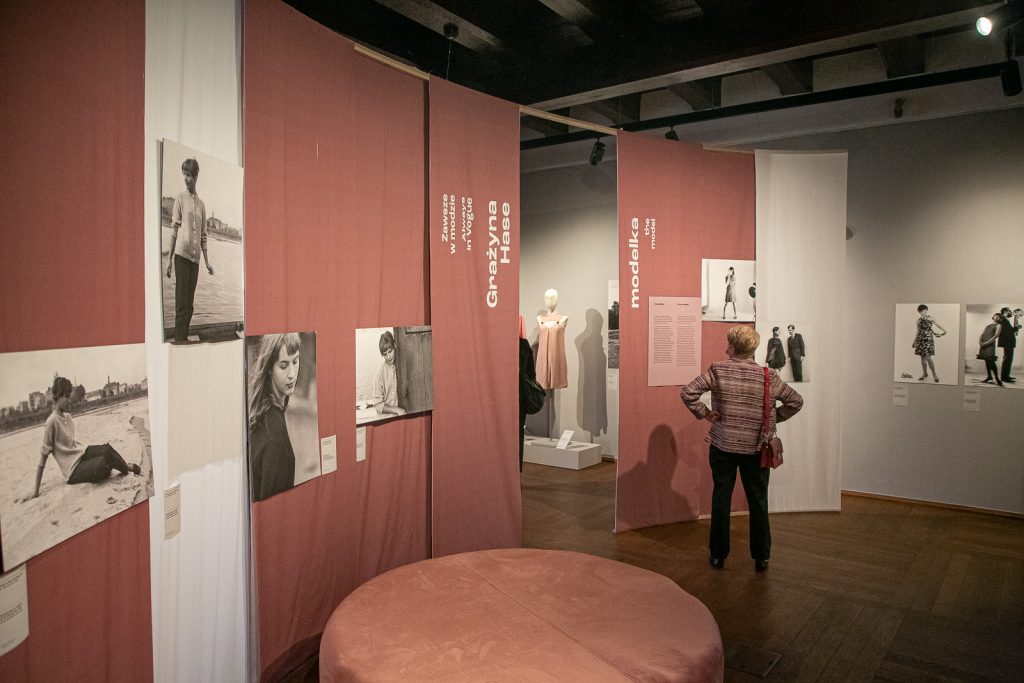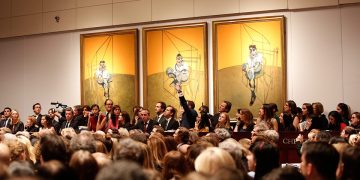In the world of art and culture, museum exhibitions have long been considered a sacred space for public education, historical reflection, and artistic appreciation. However, over the past few decades, a troubling trend has emerged, where brand sponsorships and corporate funding have begun to dominate the art world, leading to a growing conflict between artistic integrity and commercial interests. What was once an institution dedicated to preserving cultural heritage has become increasingly influenced by the demands of corporations, resulting in exhibitions that serve as marketing vehicles for brands rather than platforms for genuine artistic expression.
This article seeks to uncover the hidden world of brand-sponsored exhibitions, exposing how corporations are subtly—but increasingly—shaping the content and messaging of museum shows. By exploring the motivations behind corporate sponsorships, revealing the hidden agendas behind seemingly innocuous cultural events, and analyzing the potential consequences for the art world, we will explore the growing intersection of culture and capitalism, and the ethical implications that come with it.
The Rise of Corporate Sponsorship in Museums
Corporate sponsorship in museums is nothing new. In fact, many high-profile exhibitions have been funded or partially financed by major brands, from luxury goods companies to tech giants. Brands have long recognized the value of associating their names with prestigious cultural institutions, hoping to elevate their image through association with art and culture. However, the scale and scope of corporate involvement in museum shows has increased dramatically over the past two decades.
In the past, sponsorship was largely about funding logistical aspects of exhibitions—covering costs for display cases, transportation, or even promotional materials. Today, the relationship between museums and corporations has become far more complex and intertwined. Many museums depend on corporate sponsorship to fund major exhibitions, and in some cases, entire shows are created with a corporate agenda in mind.
At first glance, these sponsorships might seem benign, as they provide much-needed funding for cultural institutions, especially in times of financial austerity. However, a closer inspection reveals that these partnerships often come with strings attached. Corporations are not just giving money—they are gaining access to curatorial decisions, influencing exhibition content, and sometimes even dictating the narrative that is presented to the public.
The Corporate Takeover of Museum Exhibitions
One of the most concerning aspects of corporate sponsorship in museums is the increasing influence of brands over exhibition content. Corporations, in exchange for their financial support, often request that their values and products are subtly embedded into the exhibits themselves. While this may initially seem like a harmless collaboration, the line between art and advertising begins to blur when the corporation’s interests begin to shape the narrative and curatorial direction of the exhibit.
In some instances, entire exhibitions are sponsored or created by brands, with the company’s marketing team deeply involved in the curatorial process. This kind of corporate influence can have a significant impact on the themes, tone, and focus of the exhibit. For example, a museum exhibition focused on environmental sustainability might be sponsored by an oil company, resulting in a curatorial direction that downplays the negative effects of fossil fuels and emphasizes the company’s environmental efforts. Similarly, a show focused on modern technology might be funded by a tech giant, leading to an exhibit that disproportionately highlights the company’s products and innovations.
This influence is not limited to exhibitions about products or technology. It extends to virtually every aspect of the museum experience, from how exhibits are designed to the kinds of events and programs that are promoted. Corporate sponsorship often leads to a “soft power” takeover of museums, where companies gain the ability to shape public perception of their brand through cultural channels that were once considered independent and unbiased.
The Hidden Agendas Behind Corporate Sponsorships
It is important to ask why corporations are so eager to invest in the cultural world. The answer lies in the subtle but powerful role that art plays in shaping public perception. Cultural institutions, such as museums, are often viewed by the public as neutral, trustworthy, and objective. This reputation makes them the perfect platform for corporations to showcase their products and values in a way that feels authentic and disconnected from the commercial marketplace.
By sponsoring exhibitions or creating their own, corporations can create an emotional connection with audiences, using art and culture to foster a sense of goodwill, influence, and even loyalty. This is particularly true when the sponsorship is tied to a broader corporate social responsibility (CSR) initiative. For example, a luxury brand might sponsor an art exhibition to promote its commitment to craftsmanship and design, while also creating a powerful marketing opportunity for its products.
These hidden agendas often go unnoticed by museum-goers, who may see a particular exhibition as simply an exciting cultural event. The reality, however, is that behind the scenes, corporations are carefully shaping the experience, guiding the narrative, and strategically positioning themselves as contributors to the cultural conversation. Over time, this subtle influence can have far-reaching consequences, both for the art world and for public trust in cultural institutions.
The Ethical Implications of Corporate Influence in Art
As corporate sponsorship continues to play a larger role in museum exhibitions, the ethical implications of this trend have become a topic of growing concern. Many critics argue that this type of corporate influence compromises the integrity of museums and undermines their role as objective educational spaces. Museums, by their very nature, are meant to be places where visitors can encounter diverse ideas, perspectives, and artistic expressions, free from commercial pressures. However, when corporate sponsorship dictates the content and direction of exhibitions, these institutions risk becoming vehicles for corporate propaganda rather than platforms for critical engagement.
The ethical questions surrounding corporate influence in museums extend beyond concerns about bias and objectivity. One of the most significant issues is the lack of transparency in these partnerships. In many cases, the public is unaware of the degree to which corporations are involved in shaping exhibition content, leaving museum-goers in the dark about the potential motivations behind a particular show. This lack of transparency can erode public trust in museums and raise questions about who really controls the cultural narrative.
Moreover, the increasing reliance on corporate sponsorship raises concerns about the accessibility and inclusivity of museum exhibitions. When museums are heavily reliant on corporate funding, they may prioritize the interests of their corporate sponsors over the needs of their audience. This can lead to a narrowing of the types of exhibitions and programs that are offered, with museums focusing on themes that align with the values of their sponsors, rather than showcasing a diverse range of voices and perspectives.

Case Studies: Corporate Takeovers in Action
To fully understand the extent of corporate influence in museums, it is helpful to examine several case studies where corporate sponsorship has shaped the direction of exhibitions. One notable example is the controversial “The Queen and the Crown” exhibition at the National Museum of Art, which was funded by a global beverage company. The exhibition, which focused on royal history, was accused of turning the institution into a platform for promoting the company’s products. Critics claimed that the exhibition failed to provide an honest depiction of the royal family, instead focusing on curated narratives that aligned with the sponsor’s branding goals.
Another infamous example is the “Futurism and Technology” exhibition at a major metropolitan museum, sponsored by a multinational tech company. The exhibition, which initially promised to explore the evolution of technology and its impact on society, was criticized for becoming a promotional vehicle for the sponsor’s products. The show ended up focusing disproportionately on the company’s technological innovations, sidelining the broader societal implications of these developments.
These cases highlight a troubling trend: corporate-sponsored exhibitions that are less about fostering cultural discourse and more about advancing the marketing agendas of powerful brands. In both of these cases, the public was left questioning the true motivations behind the exhibitions, as well as the degree to which these corporate sponsors had influenced the curatorial process.
The Future of Museums in the Age of Corporate Sponsorship
As we look to the future, it is clear that the growing influence of corporate sponsorship in museums is unlikely to subside anytime soon. With museums facing increasing financial pressures, sponsorships from corporations may continue to be a necessary source of funding. However, it is essential that both cultural institutions and the public remain vigilant about the ethical implications of these partnerships.
To maintain the integrity of the museum space, it is crucial that museums prioritize transparency, diversity, and objectivity in their exhibitions. This means disclosing the extent of corporate involvement in the curation process and ensuring that exhibitions reflect a broad range of perspectives and ideas, rather than merely serving as vehicles for corporate branding. Museums must also consider the long-term impact of corporate influence, asking whether it is possible to maintain their educational mission while also securing sponsorships from powerful corporations.
Ultimately, the question is not whether corporate sponsorship should exist in museums—it is how this sponsorship can be managed ethically and responsibly. If museums are to continue their role as trusted cultural institutions, they must strike a delicate balance between the need for financial support and their commitment to artistic integrity.
Conclusion: The Power of Art in the Corporate Era
While corporate sponsorship in museums may appear to be a mutually beneficial relationship, the reality is more complicated. As we have seen, brand-sponsored exhibitions can have a profound impact on the content, narrative, and public perception of museum shows. In the age of corporate sponsorship, the power of art is increasingly being harnessed to advance corporate agendas. It is up to both cultural institutions and their audiences to question, challenge, and understand the influence of corporations on the cultural space, ensuring that art continues to serve the public good, rather than becoming just another marketing tool.

















































